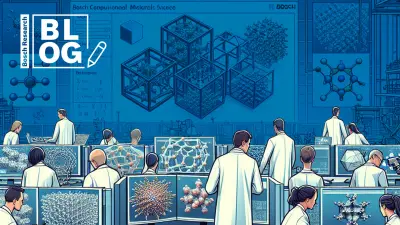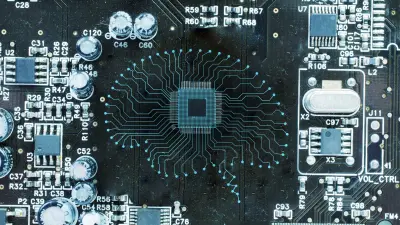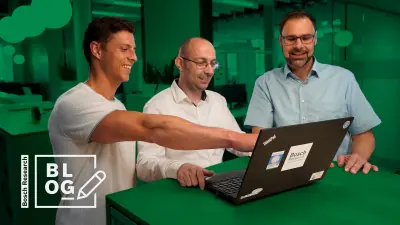Computational Materials Science challenge: hydrated crystals structure prediction

Current leaderboard
| Rank | Alias | E_NaCl | E_CaCl2 | E_ZnCl2 |
|---|---|---|---|---|
| Rank 1 | Alias Ehsan Rahmatizad Khajehpasha | E_NaCl -3.4158 | E_CaCl2 -3.4409 | E_ZnCl2 -2.8096 |
| Rank 2 | Alias Nasrin Eyvazi | E_NaCl -3.4157 | E_CaCl2 -3.442 | E_ZnCl2 -2.7989 |
| Rank 3 | Alias Moritz Gubler | E_NaCl -3.4158 | E_CaCl2 -3.4438 | E_ZnCl2 -2.7961 |
| Rank 4 | Alias IPSKH | E_NaCl -3.4156 | E_CaCl2 -3.4383 | E_ZnCl2 -2.7988 |
| Rank 5 | Alias Automato | E_NaCl -3.4071 | E_CaCl2 -3.4386 | E_ZnCl2 -2.77753 |
| Rank 6 | Alias Amanitin | E_NaCl -3.3946 | E_CaCl2 -3.4065 | E_ZnCl2 -2.7716 |
While advances in atomistic simulation tools have greatly improved the speed and accuracy with which all sorts of material properties can be calculated, a fundamental obstacle to many of these tools remains the identification of a good starting structure for the simulation. In cases where well-characterized atomistic structures are not known, this challenge of "crystal structure prediction" has been a long-standing obstacle to applying atomistic simulations to technologically-urgent problems.
A common, practical example of this problem is the analysis of materials degradation, where the structure of the degradation intermediates and products is intricately tied to the degradation process and vice versa.
- In atmospheric corrosion, the formation of complex salt hydrates dictates whether the corrosive process accelerates over time, or is self-limiting.
- In complex alloys, the intentional or unintentional formation of hard precipitates fundamentally alters mechanical properties.
- In barrier coatings, reactions with rare contaminants to form new, unintended phases can lead to unexpected catastrophic failures.
Atomistic simulations are one of the best approaches for predicting and modeling all of these scenarios, but are only possible if the structure of the relevant phases is known or can be guessed.
In an open challenge to the Psi-K community, we invite creative approaches to generating crystal structure inputs for atomistic simulations, based on an initial sampling of example structures and energies.
Summary
The challenge:
for the three chemical compositions we provide, we ask to identify a new atomic structure with the lowest possible energy, within local optimization.
The input:
for each of the three chemical compositions, we provide 100 representative, locally-optimized crystal structures and energies.
The submission:
Participants are invited to submit up to ten candidate structures for each chemical composition, which are believed to contain the lowest possible energy structure up to local optimization. Individuals are welcome to submit a new solution every two weeks, as the leaderboard is updated.
The ranking:
we will evaluate and rank the submissions in terms of their locally-optimized DFT energy. Details on the specific DFT flavour used will not be shared to discourage brute-force searches. The overall submission will be ranked according to the per-atom, locally-optimized energy of the generated structures for all chemical compositions, calculated at Bosch using the same method as that used to generate the initial examples.
The prizes:
on top of the certificate, the winners will be invited to give a short seminar to the greater Bosch community about their approach, providing a great opportunity to showcase themselves and their problem-solving skills. Additionally, the winners will be guaranteed participation in the final round interviews for the 2026 Bosch intern cohort.
We are excited to see any and all approaches to the problem, from classical approaches such as genetic algorithms, to emerging methods rooted in advances in generative AI.
Any individual is welcome to submit any number of solutions, up to one submission per two week period. Throughout the challenge, we will maintain a leaderboard of received submissions, updated biweekly.
At the conclusion of the challenge (Aug 8th 2025), we will perform the final evaluation and notify the top three participants. During the Psi-K conference, we will issue a certificate to the winners.
A valid submission will include:
- Attached plain text file with up to ten structures for each of the three chemical compositions (format below in the important information)
- Attached copy of the challenge terms and conditions. The PDF can be downloaded from below in the Important Information section. No signature is required, attachment of the document is used as acknowledgement of the challenge terms and conditions. Please attach this even for further submissions.
- Name, surname, alias (for leaderboard), and best email address for contact.
Failure to meet any of the above criteria will result in the submission being discarded automatically.
Important information
- The details of the chemical space, i.e., the initial dataset can be downloaded here (as .zip file), please extract the file yourself to .extxyz
- The challenge terms and conditions can be downloaded here
- The structure submission format MUST be one plain text file with all structures in extxyz format (for example, as can be generated by ASE), concatenated one after the other (one file containing all chemical compositions). In other words, same format as the one we provide.
- Submit your solution at cmschallenge.bosch@us.bosch.com
- Please do not include any other personal information or data in the email, only the information requested above.



